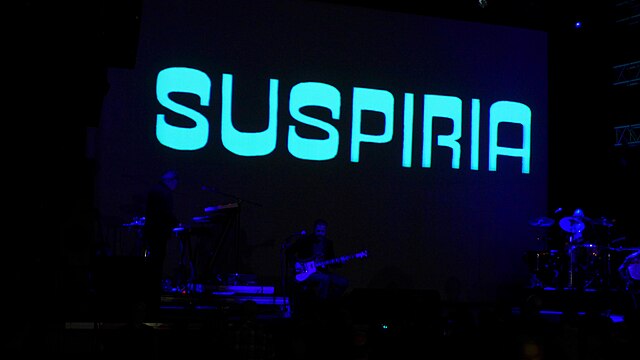
The first time I heard about Suspiria, I was nine and my babysitter was telling me I couldn’t watch it, shouldn’t even – that it was the most terrifying film she’d ever seen. Years later, when I finally watched it, I was surprised to find myself describing it to a friend as a “visual orgasm”. Revisiting it now, I would have to say that description still holds true. If you come to Suspiria for pure terror, that’s not what you’ll get. It’s more a creeping kind of unease, generated by its absurd and unsettling comedy. The primary colours contribute to this too – they bathe the film in an LSD-like delirium and leave you in a William Blake fever dream. Suspiria exists in its own realm, ungraspable and hypnotic.
You are never quite allowed into Suspiria. Dubbed voices and shots that cut just before a corner is turned keep you one second behind the characters, slightly and subtly disconnected. Their blank faces and marionette movements add to the feeling that there isn’t a plot to follow, but rather a sequence of visual experiments that come to no solution. The set design is impeccable, with buildings that are Wes Anderson in their artificiality but Mattise in their saturation. Every colour is at its most intense and perfect. There is a red which must be the mother of all other reds.
Other than its domineering colour palette, Suspiria is in a weird, indefinite, liminal space; and not just due to its uncanny sets. It’s neither purely horror nor comedy, neither plot-driven nor plotless, the characters are neither empty nor wholly realistic. The closest comparison I can make isn’t even to something real – it’s to the idea of an art-house pantomime viewed by a person on acid – and if that’s the comparison I’m reaching for, it certainly cements its status as something truly unique.
It was made at a time when it was fashionable for Italian horror movies to use ‘easy listening’ music as a counterpoint to their most violent scenes; the elevator music that would have been playing in The Shining’s lift pre-bloodbath. The difference with Suspiria is that its music box refrain of chimes is suffocated by the demonic voice that whisper-sings along to them, and occasional tabla beats mix with this to create a supernatural, ritual feeling in the score. The tightrope walk of disconnecting and blending between visuals and audio is key to the film’s effectiveness. Its opening scene becomes a masterpiece as the music box and rainstorm amalgamate into a suffocating cacophony, cutting rapidly back and forth into silence depending on whose perspective we assume. The score is oddly diegetic – we know on a certain level that the characters cannot hear it, and yet it can clearly see them. As they approach danger, the menacing chants begin to drown out the incongruous reassurance of the chimes, sending them a warning that they almost seem to hear but never listen to.
One of the reasons Suspiria is so difficult to write about is because of this liminal and enigmatic nature. Its elements meld and yet do not merge, infusing it with dread. Director Dario Argento doesn’t grant us the comfort of a meaningful plot and uses the ‘story’ more as a line on which to hang his striking tableaux and vignettes. When asked if this film has a ‘message’, I would struggle to answer. Possibly, I could tenuously claim it is about class, or that it is feminist, or anti-dictatorship. In reality, I could only say with conviction that it is about beauty. It’s about decay and the allure of that decay.
The film’s message must be an aesthetic one, as it is the senses that are fed more than the conscience. It’s decadent and immoral, a “visual orgasm” in which we look for meaning because it seems gluttonous to enjoy without one. But Suspiria remains a sensory feast that defies easy interpretation, forcing viewers to revel in its decadence without the crutch of comprehension. It’s a testament to the visceral power of cinema, the meaning is in its sensations and not in its rationalisation. So, take a deep breath, and allow Suspiria to happen to you.

